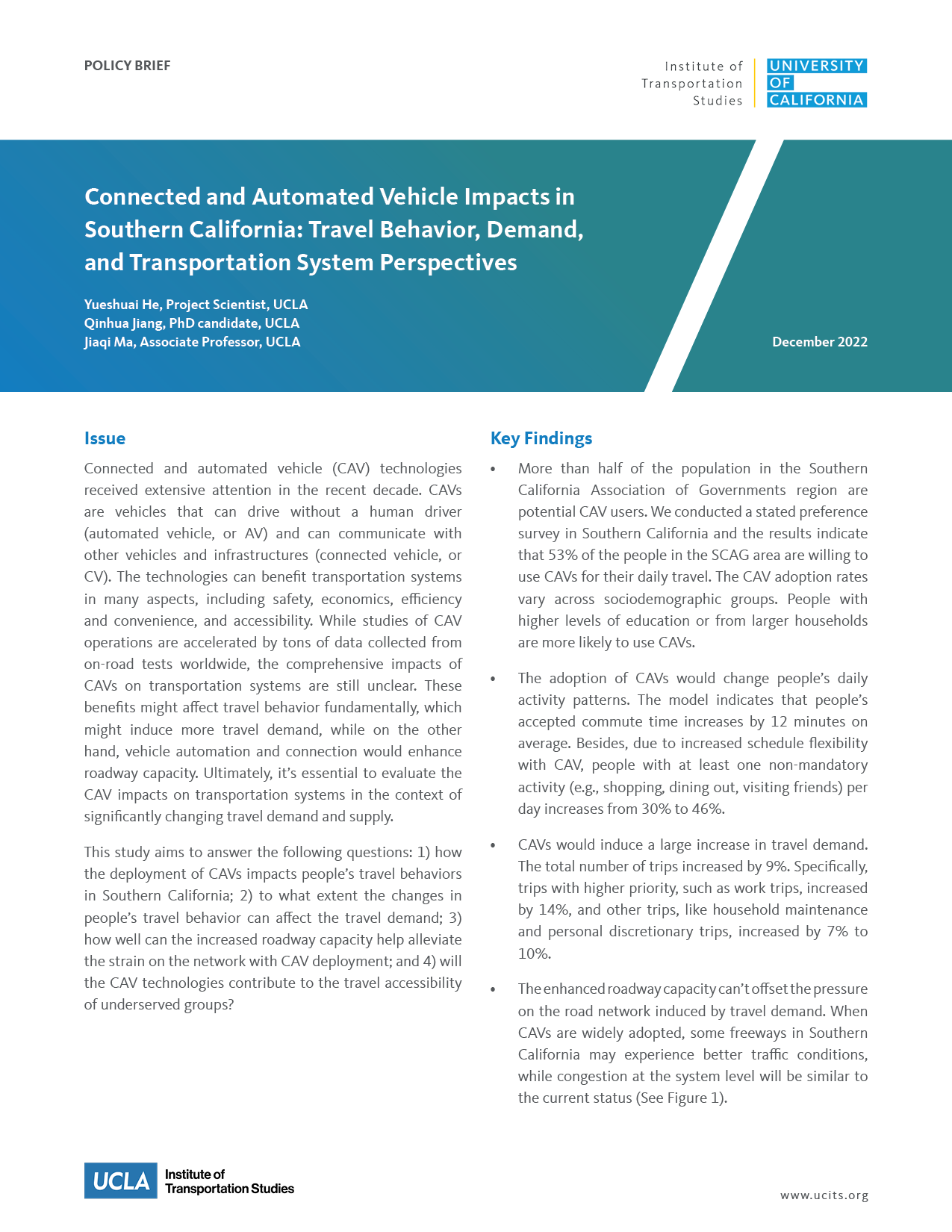Date: December 12, 2022
Author(s): Yueshuai He, Qinhua Jiang, Jiaqi Ma
Abstract
Connected and automated vehicle (CAV) technologies received extensive attention in the recent decade. CAVs are vehicles that can drive without a human driver (automated vehicle, or AV) and can communicate with other vehicles and infrastructures (connected vehicle, or CV). The technologies can benefit transportation systems in many aspects, including safety, economics, efficiency and convenience, and accessibility. While studies of CAV operations are accelerated by tons of data collected from on-road tests worldwide, the comprehensive impacts of CAVs on transportation systems are still unclear. These benefits might affect travel behavior fundamentally, which might induce more travel demand, while on the other hand, vehicle automation and connection would enhance roadway capacity. Ultimately, it’s essential to evaluate the CAV impacts on transportation systems in the context of significantly changing travel demand and supply.
About the Project
Transportation agencies use travel demand models (e.g., four-step models, activity-based models, dynamic traffic assignment models) to evaluate transportation improvement projects. However, existing travel demand models are unable to account for capacity changes of the network and mode shifts associated with connected and automated vehicle (CAV) technologies and services. This project aims to lay a foundational framework for the development of planning-level analysis capability that includes CAVs and engage in a small scale case study, toward a vision where practitioners have CAV-aware tools available. The research team will work with stakeholders in the Southern California Association of Governments (SCAG) to identify current needs in modeling CAVs and new mobility services in demand models. The project will develop methodologies to enhance the existing SCAG activity-based demand model, and the areas of enhancements include, but not limited to, capacity adjustments and new scenarios of travel behavior/choice modeling.


